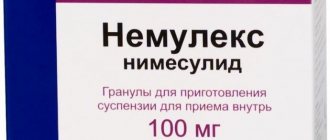Home | About us | Delivery | Advertisers | Login | Registration
Delivery on Sundays and holidays does not work!
- Medicines
- dietary supplementsVitamins
- Categories from A to Z
- Brands from A to Z
- Products from A to Z
- Medical equipment
- beauty
- Child
- Care
- Honey products appointments
- Herbs and herbal teas
- Medical nutrition
- Journey
- Making medicinesStock
Pharmacy online is the best pharmacy in Almaty, delivering medicines to Almaty. An online pharmacy or online pharmacy provides the following types of services: delivery of medicines, medicines to your home. Online pharmacy Almaty or online pharmacy Almaty delivers medicines to your home, as well as home delivery of medicines in Almaty.
my basket
Apteka84.kz is an online pharmacy that offers its customers medicines, medicinal and decorative cosmetics, dietary supplements, vitamins, baby food, intimate products for adults, medical equipment and thousands of other medical and cosmetic products at low prices. All data presented on the Apteka84.kz website is for informational purposes only and is not a substitute for professional medical care. Apteka84.kz strongly recommends that you carefully read the instructions for use contained in each package of medicines and other products. If you currently have any symptoms of the disease, you should seek help from a doctor. You should always tell your doctor or pharmacist about all the medicines you take. If you feel you need further help, please consult your local pharmacist or contact our GP online or by telephone.
© 2022 Pharmacy 84.
Berlipril 10
Trade name: Berlipril 10 International name: Enalapril
Release form: tablets 10 mg (blisters)
Composition: enalapril maleate 10 mg
Pharmacological group: ACE inhibitor
Pharmacological group according to ATK: C09AA02 (Enalapril)
Pharmacological action: vasodilating, hypotensive, diuretic, potassium-sparing, ACE blocking,
Indications: Arterial hypertension (symptomatic, renovascular, including with scleroderma, etc.), stage I-III CHF, prevention of coronary ischemia in patients with LV dysfunction, asymptomatic LV dysfunction.
Dosage regimen: Orally, regardless of food intake. For monotherapy of arterial hypertension, the initial dose is 5 mg once a day. If there is no effect, after 1-2 weeks the dose is increased by 5 mg. After the initial dose, patients should be under medical supervision for 2 hours and an additional 1 hour until blood pressure stabilizes. If necessary and sufficiently well tolerated, the dose can be increased to 40 mg/day in 1-2 doses. After 2-3 weeks, switch to a maintenance dose - 10-40 mg/day, divided into 1-2 doses. For moderate hypertension, the average daily dose is about 10 mg. The maximum daily dose of the drug is 40 mg. If prescribed to patients concomitantly receiving diuretics, treatment with the diuretic should be discontinued 2-3 days before enalapril is prescribed. If this is not possible, then the initial dose of enalapril should be 2.5 mg/day. For patients with hyponatremia (serum Na+ concentration less than 130 mmol/l) or serum creatinine concentration more than 0.14 mmol/l, the initial dose is 2.5 mg 1 time per day. Renovascular hypertension: initial dose - 2.5-5 mg/day. The maximum daily dose is 20 mg. In severe cases of arterial hypertension, intravenous administration is possible (see Enalaprilat), carried out only in a hospital setting. For CHF, the initial dose is 2.5 mg once, then the dose is increased by 2.5-5 mg every 3-4 days in accordance with the clinical response to the maximum tolerated dose (depending on blood pressure), but not higher than 40 mg/day, once, or in 2 doses. In patients with low systolic blood pressure (less than 110 mm Hg), therapy should begin with a dose of 1.25 mg. Dose selection should be carried out over 2-4 weeks or shorter periods. The average maintenance dose is 5-20 mg/day in 1-2 doses. In the elderly, a more pronounced hypotensive effect and prolongation of the drug's action time are more often observed, which is associated with a decrease in the rate of elimination of enalapril, therefore the recommended initial dose for the elderly is 1.25 mg. For asymptomatic dysfunction of the LV function - 2.5 mg 2 times a day. The dose is selected taking into account tolerability up to 20 mg/day, divided into 2 doses. In chronic renal failure, cumulation occurs when filtration decreases to less than 10 ml/min. With CC 80-30 ml/min, the dose is usually 5-10 mg/day, CC 30-10 ml/min - 2.5-5 mg/day, less than 10 ml/min - 1.25-2.5 mg/day only on dialysis days. The duration of treatment depends on the effectiveness of the therapy. If the decrease in blood pressure is too pronounced, the dose of the drug is gradually reduced.
Contraindications: Hypersensitivity to enalapril or other ACE inhibitors, pregnancy, lactation.
Side effects: From the cardiovascular system: excessive decrease in blood pressure, orthostatic collapse, rarely - chest pain, angina pectoris, myocardial infarction (usually associated with a pronounced decrease in blood pressure), arrhythmias (atrial brady- or tachycardia, atrial fibrillation), palpitations, thromboembolism of the branches of the pulmonary artery . From the nervous system: dizziness, fainting, headache, weakness, insomnia, paresthesia, anxiety, depression, confusion, fatigue, drowsiness (2-3%), very rarely when used in high doses - nervousness, depression, paresthesia . From the senses: disorders of the vestibular apparatus, hearing and vision impairment, tinnitus. From the digestive system: dry mouth, loss of appetite, dyspeptic disorders (nausea, diarrhea or constipation, vomiting, abdominal pain), intestinal obstruction, pancreatitis, impaired liver function and bile secretion, hepatitis, jaundice. From the respiratory system: nonproductive “dry” cough, interstitial pneumonitis, bronchospasm, shortness of breath, rhinorrhea, pharyngitis. Allergic reactions: skin rash, angioedema of the face, limbs, lips, tongue, glottis and/or larynx, dysphonia, exfoliative dermatitis, exudative erythema multiforme (including Stevens-Johnson syndrome), toxic epidermal necrolysis (Lyell's syndrome) , pemphigus (pemphigus), pruritus, urticaria, photosensitivity, serositis, vasculitis, myositis, arthralgia, arthritis, stomatitis, glossitis. From laboratory parameters: hypercreatininemia, increased urea concentration, increased activity of “liver” transaminases, hyperbilirubinemia, hyperkalemia, hyponatremia, decreased Hb and hematocrit, increased ESR, thrombocytopenia, neutropenia, agranulocytosis (in patients with autoimmune diseases), eosinophilia. From the urinary system: impaired renal function, proteinuria. Other: alopecia, decreased libido, flushing of the face. Overdose. Symptoms: excessive decrease in blood pressure, up to the development of collapse, myocardial infarction, acute cerebrovascular accident or thromboembolic complications, convulsions, stupor. Treatment: the patient is transferred to a horizontal position with a low headboard. In mild cases, gastric lavage and ingestion of saline solution are indicated; in more serious cases, measures aimed at stabilizing blood pressure are indicated: intravenous administration of a 0.9% NaCl solution, plasma substitutes, if necessary, intravenous administration of angiotensin II, hemodialysis (enalaprilat elimination rate - 62 ml/min).
Pharmacodynamics: An ACE inhibitor is an antihypertensive drug, the mechanism of action is associated with a decrease in the formation of angiotensin II from angiotensin I, a decrease in the concentration of which leads to a direct decrease in aldosterone secretion. At the same time, peripheral resistance, systolic and diastolic blood pressure, post- and preload on the myocardium decrease. Dilates arteries to a greater extent than veins, while no reflex increase in heart rate is observed. Reduces bradykinin degradation, increases Pg synthesis. The hypotensive effect is more pronounced at high plasma renin concentrations than at normal or reduced levels. A decrease in blood pressure within therapeutic limits does not affect cerebral circulation; blood flow in the vessels of the brain is maintained at a sufficient level even against the background of reduced blood pressure. Strengthens coronary and renal blood flow. With long-term use, hypertrophy of the LV myocardium and myofibril of the walls of resistive arteries decreases, prevents the progression of CHF and slows down the development of LV dilatation. Improves blood supply to ischemic myocardium. Reduces platelet aggregation. Extends life expectancy in patients with CHF, slows down the progression of LV dysfunction in patients who have had myocardial infarction without clinical manifestations of HF. Has some diuretic effect. Reduces intraglomerular hypertension, slowing the development of glomerulosclerosis and the risk of chronic renal failure. Enalapril is a “prodrug”: as a result of its hydrolysis, enalaprilat is formed, which inhibits ACE. The onset of the hypotensive effect when taken orally is 1 hour, it reaches a maximum after 4-6 hours and lasts up to 24 hours. In some patients, therapy is required for several weeks to achieve an optimal blood pressure level. In CHF, a noticeable clinical effect is observed with long-term treatment - 6 months or more.
Pharmacokinetics: After oral administration, absorption is 60%. Eating does not affect absorption. It is metabolized in the liver to form the active metabolite enalaprilat, which is a more effective ACE inhibitor than enalapril. Plasma protein binding of enalaprilat is 50-60%. TCmax of enalapril - 1 hour, enalaprilat - 3-4 hours. Enalaprilat easily passes through histohematic barriers, excluding the BBB, a small amount penetrates the placenta and into breast milk. T1/2 of enalaprilat - 11 hours. Excreted mainly by the kidneys - 60% (20% - in the form of enalapril and 40% - in the form of enalaprilat), through the intestines - 33% (6% - in the form of enalapril and 27% - in the form of enalaprilat) . It is removed by hemodialysis (rate 62 ml/min) and peritoneal dialysis.
Special instructions: Caution must be exercised when prescribing to patients with reduced blood volume (as a result of diuretic therapy, limiting salt intake, hemodialysis, diarrhea and vomiting) - the risk of a sudden and pronounced decrease in blood pressure is increased after using even the initial dose of an ACE inhibitor. Transient hypotension is not a contraindication for continuing treatment with the drug after stabilization of blood pressure. In case of a repeated pronounced decrease in blood pressure, the dose should be reduced or the drug discontinued. If an excessive decrease in blood pressure develops, the patient is transferred to a horizontal position with a low head, and, if necessary, a 0.9% NaCl solution and plasma-substituting drugs are administered. The use of high-flow dialysis membranes increases the risk of developing an anaphylactic reaction. Correction of the dosage regimen on days free from dialysis should be carried out depending on the level of blood pressure. Before and during treatment with ACE inhibitors, it is necessary to monitor blood pressure, blood parameters (Hb, K+, creatinine, urea, liver enzyme activity), and protein in the urine. Patients with decompensated CHF, ischemic heart disease and cerebral vascular diseases, in whom a sharp decrease in blood pressure can lead to myocardial infarction, stroke or impaired renal function, should be carefully monitored. Sudden cessation of treatment does not lead to withdrawal syndrome (a sharp rise in blood pressure). Patients with a history of angioedema have an increased risk of developing it when taking ACE inhibitors. For newborns and infants who have been exposed in utero to ACE inhibitors, it is recommended to conduct careful monitoring for timely detection of a pronounced decrease in blood pressure, oliguria, hyperkalemia and neurological disorders that may be due to a decrease in renal and cerebral blood flow with a decrease in blood pressure caused by ACE inhibitors. With oliguria, it is necessary to maintain blood pressure and renal perfusion by administering appropriate fluids and vasoconstrictor drugs. In patients with reduced renal function, the single dose should be reduced or the intervals between doses should be increased. Before studying the functions of the parathyroid glands, enalapril should be discontinued. Caution should be exercised when performing physical exercise or in hot weather (risk of dehydration and excessive reduction in blood pressure due to a decrease in blood volume). Before surgery (including dentistry), the surgeon/anesthesiologist must be warned about the use of ACE inhibitors. During the treatment period, care must be taken when driving vehicles and engaging in other potentially hazardous activities that require increased concentration and speed of psychomotor reactions (dizziness is possible, especially after taking the initial dose of an ACE inhibitor in patients taking diuretic drugs). Carefully. History of angioedema during therapy with ACE inhibitors, hereditary or idiopathic angioedema, aortic stenosis, cerebrovascular diseases (including cerebrovascular insufficiency), coronary artery disease, coronary insufficiency, severe autoimmune systemic connective tissue diseases (including SLE , scleroderma), inhibition of bone marrow hematopoiesis, diabetes mellitus, hyperkalemia, bilateral renal artery stenosis, stenosis of the artery of a solitary kidney, condition after kidney transplantation, renal and/or liver failure, Na+-restricted diet, conditions accompanied by a decrease in blood volume (including . diarrhea, vomiting), elderly age, age under 18 years (safety and effectiveness of use have not been studied).
Interaction: Enhances the effect of ethanol, slows down the excretion of Li+. Weakens the effect of drugs containing theophylline. The hypotensive effect is reduced by NSAIDs and estrogens, and enhanced by diuretics, other antihypertensive drugs (beta-blockers, methyldopa, nitrates, BMCA, hydralazine, prazosin), drugs for general anesthesia, ethanol. Potassium-sparing diuretics and potassium-containing drugs increase the risk of developing hyperkalemia. Drugs that cause bone marrow suppression increase the risk of developing neutropenia and/or agranulocytosis. Immunosuppressants, allopurinol, cytostatics increase hematotoxicity.
Drug registration number: P No. 015007/01-2003
Date of registration (re-registration) of the drug: 06/30/2003




